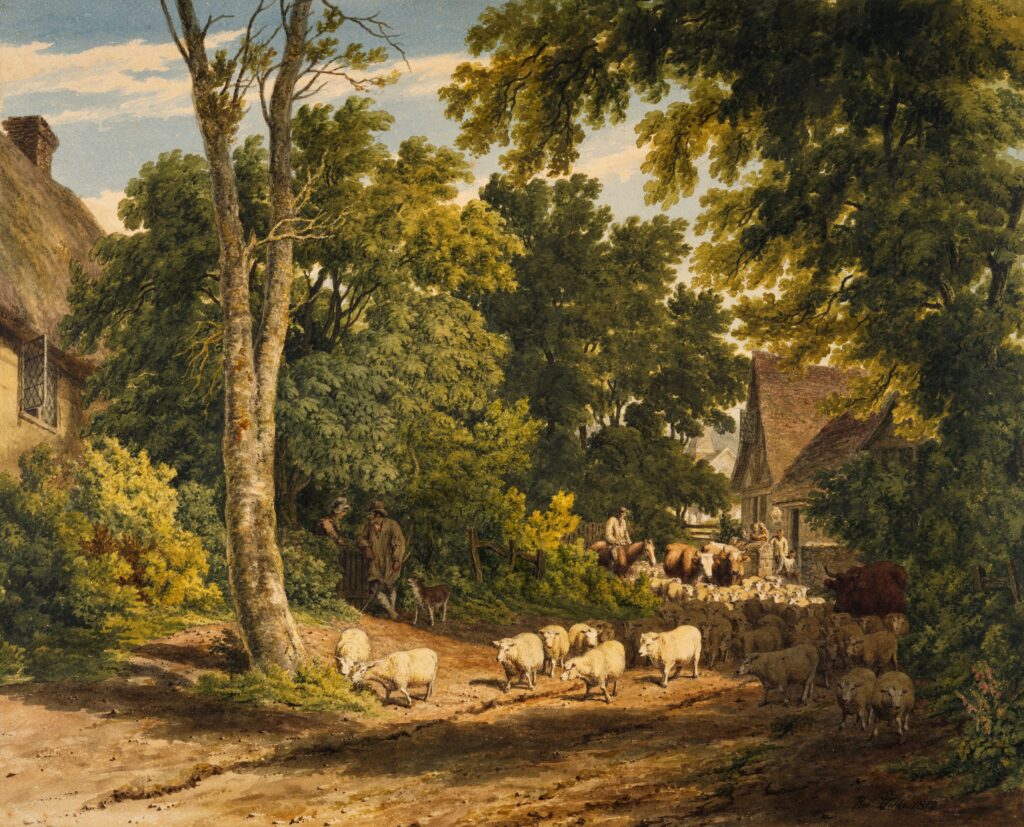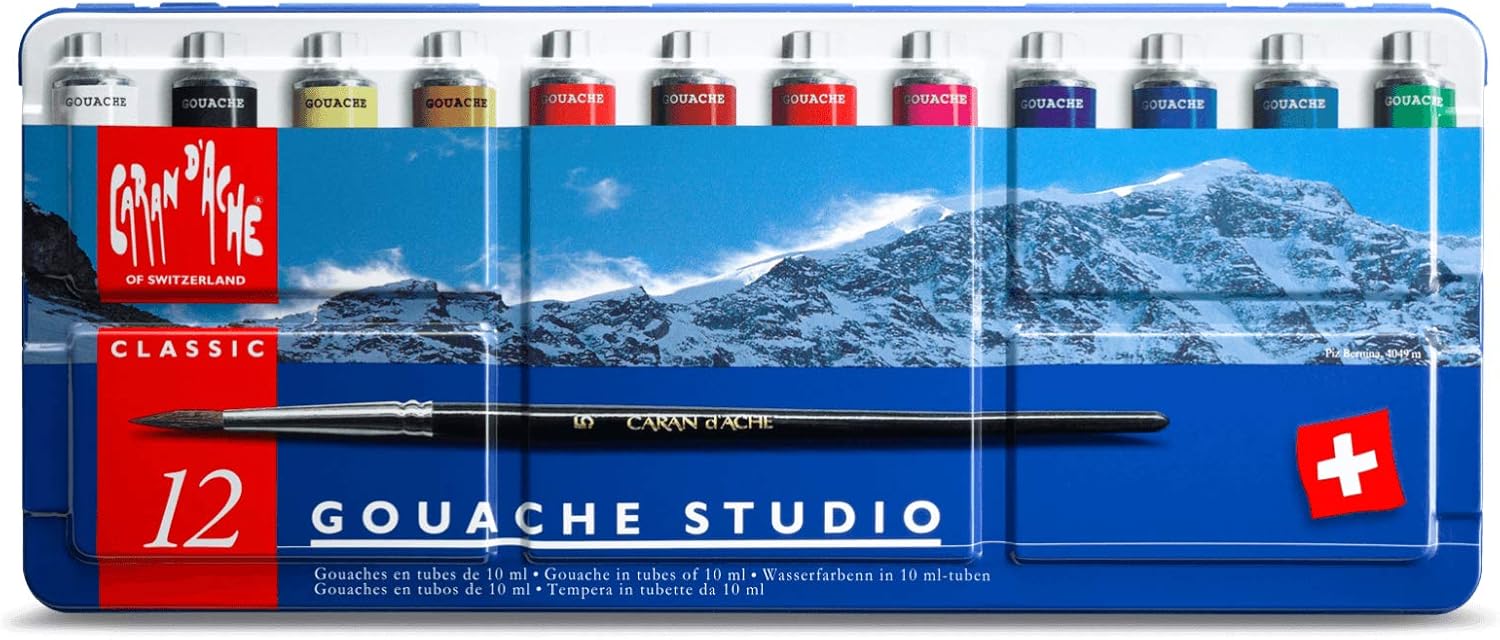Gouache paints, known for their vibrant colors and versatility, require proper care and maintenance to ensure their longevity. To keep your gouache paints in optimal condition, it is crucial to understand the necessary steps involved in their care. From storing them correctly and cleaning your brushes meticulously to avoiding exposure to direct sunlight, this article provides valuable insights and practical tips on how to effectively care for your gouache paints, allowing you to create stunning artworks for years to come.

This image is property of images.unsplash.com.
Storing Gouache Paints
When it comes to storing gouache paints, it is important to take a few precautions to ensure their longevity and quality. One of the key factors to consider is keeping the paints in airtight containers. This helps to prevent air exposure, which can lead to the paints drying out and becoming unusable. It is recommended to transfer the paints into smaller containers that can be tightly sealed, rather than keeping them in their original tubes.
In addition to using airtight containers, it is crucial to avoid extreme temperature and humidity conditions. Gouache paints are sensitive to temperature fluctuations and high humidity levels, which can affect their consistency and color intensity. It is best to store gouache paints in a cool and dry environment, away from direct sunlight and sources of heat. This will help prolong their shelf life and maintain their quality over time.
To further protect the paints from moisture damage, it is advisable to use moisture-absorbing agents such as silica gel packets or desiccants. These can be placed inside the storage containers to help absorb any excess moisture and maintain a dry environment for the paints. Regularly checking and replacing these moisture-absorbing agents will ensure optimal conditions for storing gouache paints.
Preparing Gouache Paints for Use
Before diving into your artistic endeavors with gouache paints, it is important to properly prepare them for use. One essential step is to thoroughly shake the tubes of paint before squeezing out the desired amount. This helps to ensure that the paint is well-mixed and any pigment settled at the bottom of the tube is evenly distributed. Once shaken, gently squeeze the tube to release the desired amount of paint onto your palette.
To achieve the desired consistency of the gouache paints, it is recommended to mix in a little water. This allows you to control the thickness and transparency of the paint, depending on your artistic preferences. Be cautious not to add too much water at once, as it can dilute the paint excessively and affect its vibrancy. Gradually adding small amounts of water while mixing the paint will help you achieve the desired consistency.
When you have finished using a particular color or have leftover mixed paint on your palette, it is important to cover it with a damp cloth. This helps to prevent the paint from drying out prematurely, allowing you to revisit it later without it becoming unusable. The damp cloth acts as a barrier, keeping the paint moist and workable for an extended period of time.
Using and Cleaning Gouache Brushes
Choosing the right brushes for working with gouache is crucial to achieving the desired effect and level of detail in your artwork. It is recommended to select brushes specifically designed for gouache, as they are often made with soft bristles that are ideal for the medium. Look for brushes with short, sturdy handles that provide good control and allow for precise strokes.
Once you have completed your painting or finished using a specific brush, it is essential to clean the brushes immediately. Gouache is water-soluble, which means it can easily be washed off the brushes with water. Rinse the brushes thoroughly with lukewarm water, gently massaging the bristles to remove any remaining paint. Avoid using hot water, as it can damage the bristles and affect the shape of the brush.
To ensure the longevity and performance of your gouache brushes, it is advisable to use gentle soaps or brush cleaners specifically formulated for water-based paints. These cleaners effectively remove any dried or stubborn paint residue without damaging the brushes. After cleaning, reshape the bristles and allow the brushes to air dry completely before storing them to prevent mold or mildew growth.
Maintaining Gouache Paint Palettes
Gouache paint palettes play a crucial role in wetting and mixing paints, making it essential to maintain their cleanliness and functionality. It is recommended to use airtight palettes with multiple compartments to keep different colors separate and prevent them from drying out too quickly. This allows you to have easy access to a variety of colors while painting without the need for constant mixing.
After each use, it is important to clean the palettes thoroughly to remove any dried or excess paint. Gouache can dry quickly, especially when exposed to air, so cleaning the palettes immediately helps prevent the paints from hardening and becoming difficult to remove. Use a damp cloth or sponge to wipe away the excess paint, followed by rinsing the palette with water to ensure all traces of paint are removed.
If you come across any dried-up or contaminated paint on your palette, it is best to replace it with fresh paint. Dried or contaminated paint can affect the quality and color accuracy of your work, so regularly inspecting your palette and replacing any compromised paint will help maintain the integrity of your artwork.

This image is property of images.unsplash.com.
Avoiding Contamination
To ensure the purity and vibrancy of your gouache colors, it is important to avoid contamination between different colors. One effective way to do this is by using separate containers for each color you are working with. By assigning a specific container to each color, you eliminate the risk of unintentionally mixing colors and creating unwanted hues.
Before switching from one color to another, it is crucial to clean your brushes and palettes thoroughly. Rinse your brushes with water until all traces of the previous color are removed, and clean your palette with a damp cloth or sponge to ensure no remnants of the previous color are left behind. Taking these extra precautions will help maintain the clarity and vibrancy of each individual color.
Additionally, it is important to avoid double-dipping brushes into different color containers. This can lead to cross-contamination and can affect the purity of the colors you are working with. Always clean your brush before dipping it into a new color to avoid unintentional mixing.
Preserving Gouache Paintings
Once you have completed your gouache painting, it is vital to take measures to preserve its quality and longevity. Allowing the painting to dry completely is the first step in this preservation process. Gouache paint dries relatively quickly, but it is important to give it ample time to fully dry before storing or framing the artwork. This will help prevent any smudging or damage to the painting during handling.
To protect the finished work, it is advisable to use fixatives or varnishes specifically designed for gouache paintings. These protective coatings help to safeguard the painting from harmful elements such as dust, dirt, and UV damage. Applying a fixative or varnish will not only enhance the appearance of the artwork but also increase its resistance to fading and aging.
When it comes to storing gouache paintings, it is crucial to take into consideration the environmental conditions. Ideally, paintings should be stored in a controlled environment with stable temperature and humidity levels. Avoid areas with excessive moisture, direct sunlight, or extreme temperature fluctuations, as these can degrade the quality of the paint and affect the overall appearance of the artwork. Storing paintings in acid-free folders or portfolios can provide an additional layer of protection against exposure to light and dust.

This image is property of images.unsplash.com.
Troubleshooting Gouache Paints
While gouache paints are versatile and easy to work with, they may encounter some common issues that can be resolved with a few simple techniques. If you find that your gouache paints have dried up, they can be revitalized by adding water or using a gouache medium. Add small amounts of water or medium to the dried paint and gently mix until it reaches the desired consistency. Be cautious not to add too much water, as it can dilute the paint excessively and affect its opacity.
It is also important to keep track of the expiration dates of your gouache paints. Over time, the pigments in the paint can degrade, resulting in loss of color intensity and overall quality. By regularly checking the expiration dates, you can ensure that you are using the paints at their peak performance and avoid potential disappointment in the final result.
In the event that your gouache painting requires restoration or repairs, it is recommended to seek professional guidance. Restoration techniques for gouache paintings may vary depending on the specific issues and original materials used. A professional conservator will have the knowledge and expertise to assess the painting’s condition and provide appropriate restoration recommendations and techniques.
Tips and Tricks for Gouache Paints
Gouache paints offer endless possibilities for creativity and expression. By experimenting with different techniques and styles, you can discover unique ways to enhance your artwork. Try out various brush strokes, layering techniques, and color combinations to push the boundaries of your creativity and add depth to your paintings.
Before diving into your main artwork, it is beneficial to test colors and mixes on scrap paper. This allows you to preview how the colors interact with each other and helps you make informed decisions before applying them to your painting. Testing different combinations and experimenting with different ratios of water and paint can lead to exciting discoveries and unexpected results.
If you wish to add texture to your gouache paintings, consider incorporating natural or synthetic additives. Mixing in small amounts of mediums such as granular or textural gels can create interesting effects and add depth and dimension to your artwork. Play around with different additives to achieve the desired texture and visual impact.

Enhancing Gouache Paintings
If you want to take your gouache paintings to the next level, consider using additional mediums to achieve specific effects. Gouache works beautifully with other water-based paints such as watercolor or acrylics. By combining different mediums, you can create unique textures, gradients, and details in your artwork. Experimenting with different paint combinations will allow you to expand your artistic horizons and unlock new possibilities.
Incorporating natural or synthetic additives can also help enhance your gouache paintings. Consider using materials like sand, salt, or tissue papers to add texture and depth to your artwork. These additives can be applied either directly to the paper or mixed with the paint itself. By incorporating different materials, you can create visually intriguing effects that add a touch of uniqueness to your gouache paintings.
Conclusion
Caring for your gouache paints is crucial in maintaining their quality, vibrancy, and longevity. By following proper storage techniques, preparing the paint correctly, and taking care of your brushes and palettes, you can ensure optimal performance and achieve the desired results in your artwork. Avoiding contamination, preserving finished paintings, troubleshooting common issues, and experimenting with different techniques and styles will further enhance your experience with gouache paints. With proper care and attention, your gouache paintings will continue to inspire and captivate audiences for years to come.




